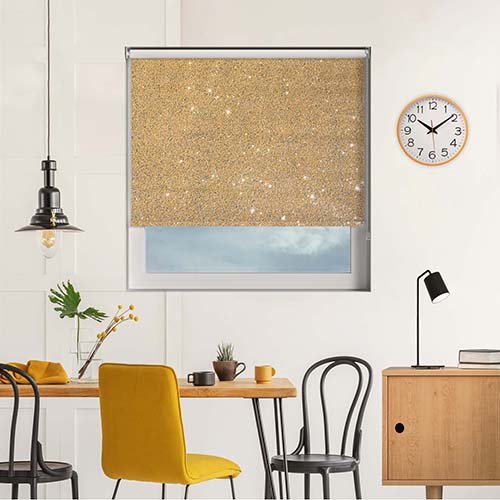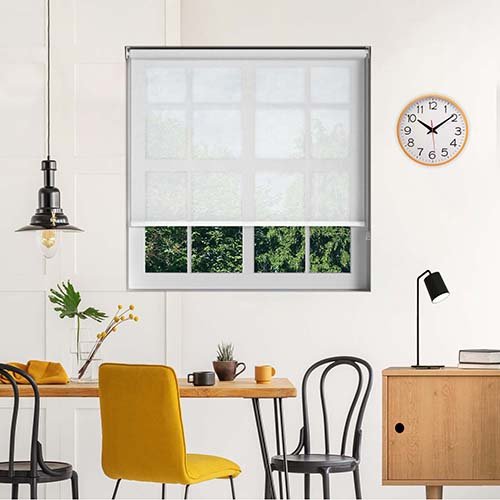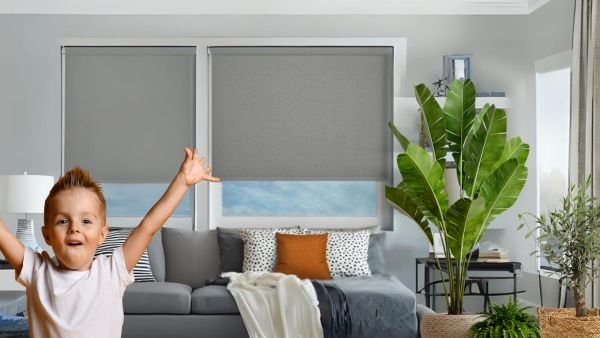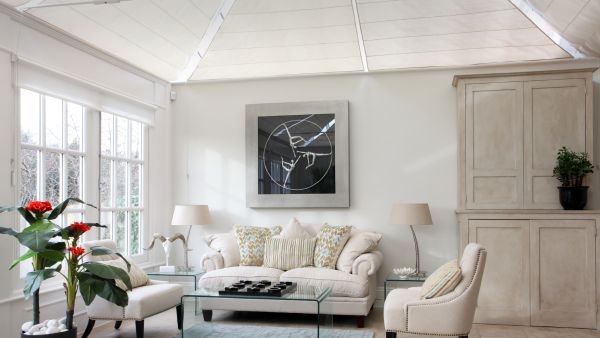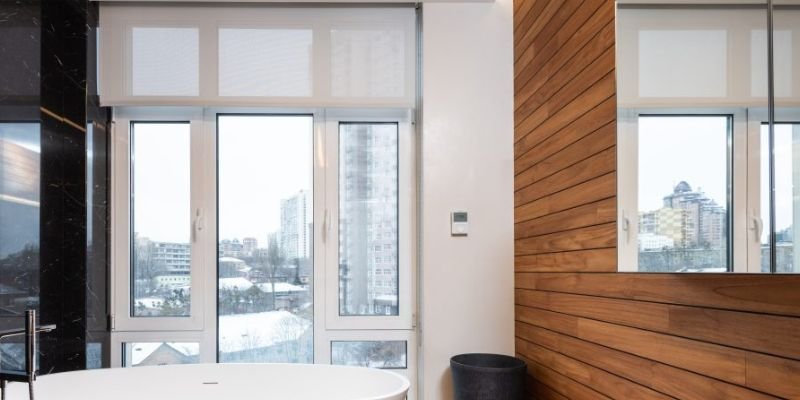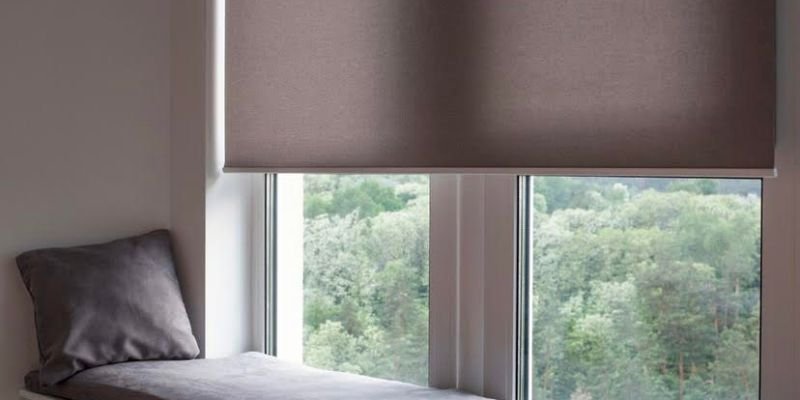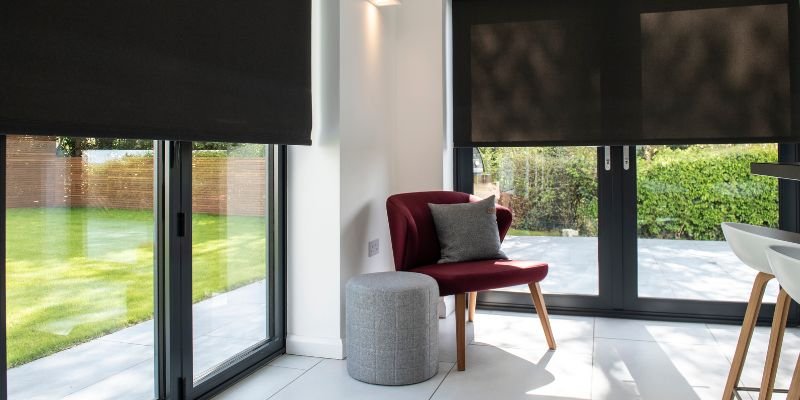A Guide to Fabric Blinds

Selecting the perfect blinds for your windows can get overwhelming. You want something that complements the aesthetics, is practical to use, and easy to manage, and more importantly fits your budget.
Fabric blinds can be that for you.
They are a stylish option that provides excellent light control and privacy while also adding to the elegance of your interior decor.
In this guide, we will walk you through fabric blinds, explaining their benefits, and types. We will also provide a buying guide for the perfect blinds so you can make an informed choice.
Why Get Fabric Blinds for Your Home?
Here’s why you should get fabric blinds for your home:
Soft Light Control
Fabric blinds provide a gentle, diffused light that creates a warm and inviting atmosphere in your home. Unlike hard materials, fabric blinds soften natural light, reducing glare and creating cozy ambiance.
This makes them ideal for rooms where you want a softer, more relaxed light, such as living rooms and bedrooms.
Better Privacy
The woven texture of the fabric allows some light to pass through while keeping prying eyes out. This helps maintain privacy without completely darkening the room, which makes fabric blinds perfect for ground-floor windows or spaces where you desire both light and discretion.
Insulation and Energy Efficiency
The thickness and texture of fabric blinds can enhance the insulation of your windows, helping to keep your home warmer in the winter and cooler in the summer.
The insulating properties of fabric blinds reduce heat loss during colder months and block out excess heat during warmer months, potentially lowering your energy bills and making your home more energy-efficient.
Aesthetic Appeal
Fabric blinds are available in an array of colours, patterns, and textures, allowing you to customize them to match your home’s decor.
Whether you want a minimalist look with neutral tones or a bold statement with vibrant colours and patterns, fabric blinds can complement any interior design style.
Easy Care and Maintenance
Maintaining fabric blinds is relatively simple. Many fabric blinds are designed to be dust-resistant and can be easily cleaned with a vacuum or a light brushing. Some even have removable panels that can be washed, ensuring they stay fresh and look new with minimal effort.
Types of Fabric Blinds
Let’s discuss the common types of fabric blinds:
Pleated Blinds
Pleated blinds are made from a single piece of fabric folded into crisp, horizontal pleats. These blinds are ideal for small to medium-sized windows where you want a minimalistic look.
One advantage of pleated blinds is their ability to fit into shallow window recesses, making them suitable for spaces where other blinds may not fit. They also come in both standard and blackout fabric options, giving you flexibility depending on the room's needs.
Roman Blinds
Roman blinds are a luxurious option, made from fabric that folds neatly into pleats when raised. They are a great choice for bedrooms and living rooms where you want to create a cozy, elegant atmosphere. You can line them with thermal or blackout material, which adds insulation and improves light control.
When choosing Roman blinds, consider the fabric's weight and texture, as heavier fabrics will create a more structured look, while lighter fabrics will give a softer, more relaxed appearance.
Fabric Roller Blinds
Fabric roller blinds are simple and highly functional, consisting of a single piece of fabric that rolls up into a tube at the top of the window. These blinds are excellent for spaces where you need a clean, streamlined appearance and are particularly effective in kitchens and bathrooms due to their ease of cleaning.
Roller blinds can be customized with different fabric treatments, such as waterproofing or UV protection, making them practical for various environments.
Vertical Blinds
Vertical blinds are constructed from vertical fabric slats that can be rotated to control light and privacy. They are particularly well-suited for large windows and sliding glass doors.
Vertical blinds offer the advantage of being less prone to collecting dust compared to horizontal blinds, and their fabric slats can often be removed for easy cleaning or replacement. These blinds are ideal for modern homes, providing a sleek, functional solution for large openings.
Panel Blinds
Panel blinds are similar to vertical blinds but use wider fabric panels, making them a contemporary choice for covering large windows or acting as room dividers. The panels slide smoothly along a track and can be stacked to one side when not in use, offering a clear view outside.
It is essential to mention that because of their wide surface area, the fabric choice is particularly important with panel blinds; heavier, opaque fabrics can create a dramatic effect, while lighter, semi-transparent fabrics offer a softer, more subtle look.
How to Choose Fabric Blinds?
If you are thinking about getting fabric blinds, here’s how to go about it:
Type of Fabric
The fabric you choose will determine not only the look but also the functionality of your blinds. For instance, if you want to block out light completely, opt for blackout fabrics that prevent any light from passing through.
On the other hand, for living spaces where you might want to filter natural light, a sheer or semi-sheer fabric could be more appropriate. Additionally, consider the room’s humidity levels—certain fabrics like polyester blends are more resistant to moisture and are better suited for kitchens and bathrooms.
Size
Accurate measurements are crucial when ordering fabric blinds, especially if you’re going for a made-to-measure option.
Measure the width and the drop (height) of your window, and decide whether you want the blinds to fit inside the window recess or cover the entire window frame.
For inside mounts, make sure to deduct a small amount from your measurements to allow the blinds to fit snugly without scraping the sides.
Production Method
The quality of fabric blinds can vary significantly based on their production method. Handmade or custom-made blinds often offer higher quality with more attention to detail, such as precisely finished hems and durable stitching.
In contrast, mass-produced blinds might be more cost-effective but could lack the refinement of custom products. If longevity and a perfect fit are important to you, investing in custom blinds may be worthwhile.
Price
While fabric blinds are available at various price points, it’s important to consider the long-term value rather than just the upfront cost. Higher-priced blinds often come with better-quality fabrics, more durable mechanisms, and extended warranties.
How to Maintain Fabric Blinds?
Here’s how you can maintain fabric blinds:
Dust regularly: Use a microfiber cloth or vacuum with an upholstery attachment.
Spot clean stains: Use a mild detergent; test on a small area first.
Professional cleaning: Consider for delicate or heavily soiled blinds.
Check mechanisms: Ensure cords and tracks function smoothly.
Frequently Asked Questions
What is the difference between PVC and fabric blinds?
PVC blinds are made from durable, moisture-resistant plastic, so they're ideal for humid areas like kitchens and bathrooms. They offer easy cleaning and are more rigid.
In contrast, fabric blinds provide a softer, more decorative look with various textures and patterns, but require more careful maintenance to keep them looking fresh.
How much fabric do you need for blinds?
The amount of fabric needed depends on the type of blind and the size of the window.
For example, Roman blinds require more fabric due to the pleats, usually about 1.5 to 2 times the height of the window, plus extra for hems and seams.
Roller blinds, on the other hand, require less fabric, typically just the window dimensions plus a few extra inches for coverage.































































